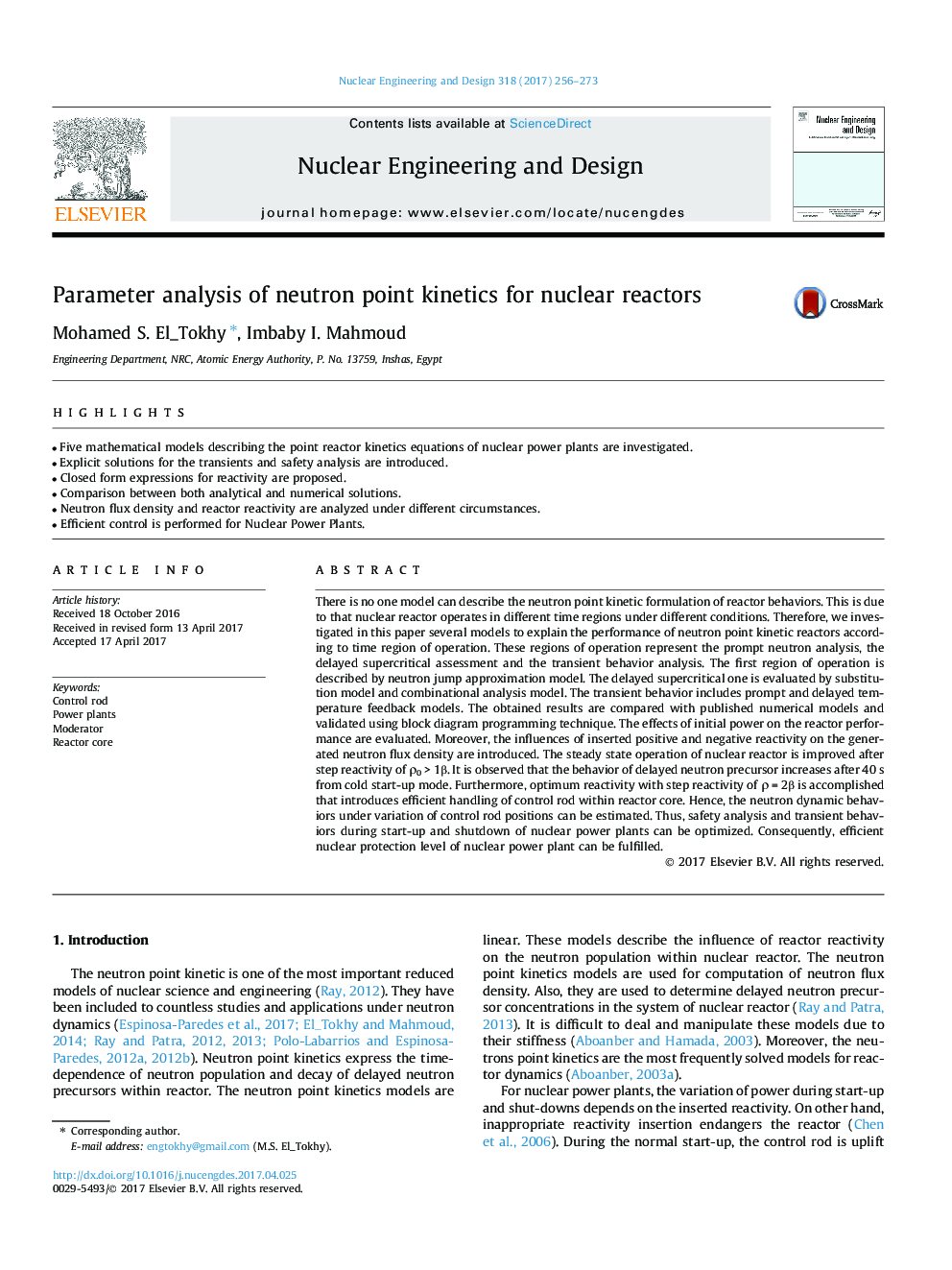| Article ID | Journal | Published Year | Pages | File Type |
|---|---|---|---|---|
| 4925486 | Nuclear Engineering and Design | 2017 | 18 Pages |
Abstract
There is no one model can describe the neutron point kinetic formulation of reactor behaviors. This is due to that nuclear reactor operates in different time regions under different conditions. Therefore, we investigated in this paper several models to explain the performance of neutron point kinetic reactors according to time region of operation. These regions of operation represent the prompt neutron analysis, the delayed supercritical assessment and the transient behavior analysis. The first region of operation is described by neutron jump approximation model. The delayed supercritical one is evaluated by substitution model and combinational analysis model. The transient behavior includes prompt and delayed temperature feedback models. The obtained results are compared with published numerical models and validated using block diagram programming technique. The effects of initial power on the reactor performance are evaluated. Moreover, the influences of inserted positive and negative reactivity on the generated neutron flux density are introduced. The steady state operation of nuclear reactor is improved after step reactivity of Ï0 > 1β. It is observed that the behavior of delayed neutron precursor increases after 40 s from cold start-up mode. Furthermore, optimum reactivity with step reactivity of Ï = 2β is accomplished that introduces efficient handling of control rod within reactor core. Hence, the neutron dynamic behaviors under variation of control rod positions can be estimated. Thus, safety analysis and transient behaviors during start-up and shutdown of nuclear power plants can be optimized. Consequently, efficient nuclear protection level of nuclear power plant can be fulfilled.
Related Topics
Physical Sciences and Engineering
Energy
Energy Engineering and Power Technology
Authors
Mohamed S. El_Tokhy, Imbaby I. Mahmoud,
